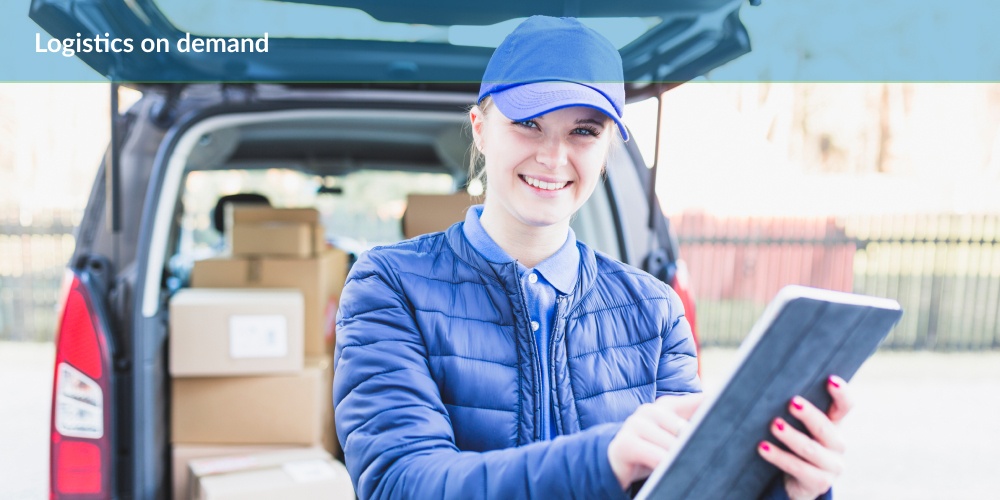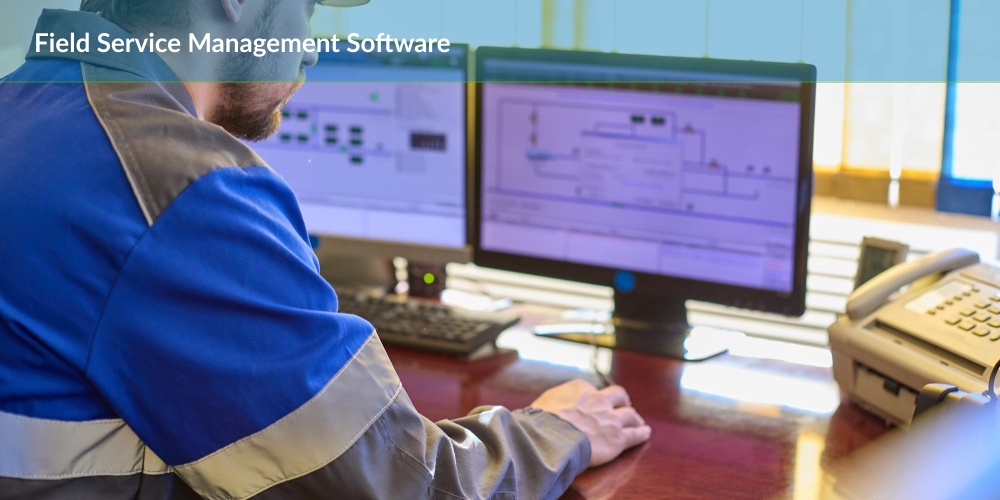


Last-mile logistics is a crucial step in the supply chain, where goods are transported from a distribution center to the final destination, often at a customer’s doorstep. It’s vital because it’s the final touchpoint between businesses and consumers, directly influencing customer satisfaction and loyalty.
In recent years, the landscape of last-mile delivery logistics solutions has rapidly evolved, driven by technological advancements and shifting consumer expectations. Businesses are increasingly embracing innovative solutions to address the challenges associated with traditional last-mile logistics. These solutions are revolutionizing how goods are delivered to customers, making the process more efficient, cost-effective, and environmentally sustainable.
Traditional last-mile logistics often involve manual processes, such as paper-based tracking systems and inefficient route planning. These methods can lead to delays, increased costs, and environmental impacts. But tech-driven solutions, such as route optimization software, real-time tracking systems, and alternative delivery methods like autonomous vehicles, are transforming last-mile delivery challenges. These innovations promise to streamline operations, reduce costs, and enhance sustainability.
“In supply chain management and transportation planning, the last mile or last kilometer is the last leg of a journey comprising the movement of passengers and goods from a transportation hub to a final destination. The concept of “last mile” was adopted from the telecommunications industry, which faced difficulty connecting individual homes to the main telecommunications network.”- Wikipedia
Traditional last-mile logistics were considered inappropriate and ineffective due to various reasons.
Today’s logistics industry is undergoing a significant transformation due to technological advancements. Technology is pivotal in optimizing the supply chain process, from streamlining last-mile delivery to enhancing warehouse operations. Let’s delve into the rise of tech-driven solutions and explore how they reshape the logistics landscape.
Gone are the days of manual processes and paperwork dominating the logistics sector. With the advent of technology, everything is becoming more efficient and streamlined. Whether tracking packages in real-time or optimizing delivery routes, top last-mile logistics companies are harnessing the power of technology to improve their operations.
One of the biggest challenges in logistics has always been last-mile delivery, i.e., the journey from the distribution center to the customer’s doorstep. However, with the help of data analytics, companies can now analyze various factors such as traffic patterns, delivery locations, and customer preferences to optimize delivery routes and ensure timely deliveries.
Automation and robotics have revolutionized warehouse operations and delivery processes. Companies can significantly increase efficiency and reduce errors by automating repetitive tasks such as sorting, packing, and loading. Moreover, robotics in delivery processes, such as autonomous vehicles, is becoming increasingly popular, enabling faster and more cost-effective deliveries.
Artificial intelligence (AI) and machine learning (ML) are transforming the logistics industry through predictive analytics. By analyzing vast amounts of data, AI algorithms can predict demand, optimize inventory levels, and anticipate potential disruptions in the supply chain by last-mile logistics providers. This proactive approach helps companies stay ahead of the curve and better serve their customers.
The Internet of Things (IoT) has revolutionized how companies track and monitor their assets in real time. By equipping vehicles, packages, and warehouses with IoT devices, companies can gather valuable data on location, temperature, humidity, and other environmental factors. This level of visibility allows for better decision-making and greater control over the entire supply chain.
Revolutionizing Last-Mile Logistics isn’t just about efficiency and speed; it’s fundamentally about elevating the end-consumer experience. As the e-commerce industry expands, innovative last-mile solutions have become a pivotal differentiator in customer satisfaction. By leveraging cutting-edge technology, logistics companies can transform mere delivery into a personalized, seamless experience that resonates with customers.
Adopting tech-driven solutions in last-mile logistics directly correlates with increased customer satisfaction levels. Real-time tracking features, flexible delivery windows, and the ability to easily reschedule all contribute to a sense of control and transparency that customers greatly appreciate. This not only boosts satisfaction but also encourages brand loyalty and repeat business.
Data analytics plays a crucial role in understanding customer preferences and behavior. By analyzing data, companies can predict the best delivery times, optimize routes, and suggest convenient pick-up locations. These proactive approaches ensure that the delivery experience is tailored to each customer’s individual needs, making the final leg of the delivery journey feel effortless and considerate.
that fosters trust and emphasizes the company’s commitment to service excellence.
By integrating customer-centric innovations into last-mile logistics, companies are not just delivering a package but an experience that delights and exceeds expectations. This focus on the customer experience sets apart leaders in the logistics sector, ensuring their position at the forefront of the industry’s evolution.
Several companies have already embraced tech-driven solutions and are reaping the benefits. Let’s take a closer look at some of these success stories:
Amazon utilizes AI algorithms to predict customer demand and optimize its delivery network. By analyzing past purchase behavior and other data points, Amazon can anticipate what customers want before placing an order, ensuring faster delivery times and higher customer satisfaction.
UberEats leverages algorithmic route planning to optimize food delivery routes and reduce delivery times. By considering traffic, distance, and order volume, UberEats can efficiently dispatch delivery drivers and ensure that orders reach customers hot and fresh.
DHL utilizes IoT-enabled tracking devices to monitor the location and condition of packages throughout the shipping process. This level of visibility helps DHL optimize its delivery routes and enables proactive problem-solving in case of delays or disruptions.
FedEx has embraced robotics for warehouse automation, deploying autonomous robots to assist with tasks such as sorting and picking. By automating these processes, FedEx has significantly increased its operational efficiency and handled higher volumes of packages with greater accuracy.
Pro Tip: Integrate data analytics and AI into your logistics operations for real-time insights and predictive capabilities, ensuring proactive decision-making and optimizing supply chain performance. Embrace automation and IoT to streamline processes, enhance visibility, and deliver seamless, customer-centric experiences.
With the evolution of tech-driven Solutions, last-mile logistics companies have attained various benefits.
Last Mile Logistics has evolved at a greater pace since its inception and is growing with time. Future trends and innovation are expected to lead the dimension of the logistics sector.
As cities become smarter and more connected, last-mile delivery routes will become increasingly optimized. Smart city infrastructure, such as sensor networks and traffic management systems, will provide real-time data on road conditions, traffic flow, and delivery demand, enabling logistics companies to plan the most efficient routes and minimize delivery times.
Revolutionizing Last-Mile Logistics requires technological innovation and significant investment to navigate the challenges presented by a rapidly evolving market. As e-commerce grows, the pressure on logistics systems and the need for effective last-mile delivery solutions become increasingly critical. Here, we explore the relationship between investment and innovation within last-mile logistics.
Investment trends in logistics technology have seen a remarkable upswing, with venture capitalists and corporate investors recognizing the potential for high returns in an industry ripe for transformation. There is a particular interest in startups that promise to disrupt traditional delivery models with scalable, tech-driven solutions. These investments are driving a new era of logistics, with an emphasis on minimizing costs, improving efficiency, and elevating customer satisfaction.
Funding is crucial in accelerating the development and adoption of innovative last-mile logistics technologies. Investment fuels research and development, allowing companies to pilot and iterate advanced technologies such as automated delivery vehicles, drones, and sophisticated tracking systems.
It also enables scaling operations to meet the growing demand for fast and reliable deliveries. The influx of capital into this sector assures that promising technological solutions can reach the market swiftly, redefining industry standards.
Strategic investments in last-mile logistics technology provide the means for advancements and significantly alter market dynamics and competitiveness. Companies that secure funding gain a crucial edge, allowing them to leverage cutting-edge technology to optimize deliveries and enhance the end-user experience. This, in turn, sets a new bar for competitors, spurring further innovation and investment across the industry. The result is a forward-moving market where technology-driven solutions become the benchmark for success in last-mile logistics.
The rapid expansion of e-commerce and heightened consumer expectations have brought last-mile logistics to a critical inflection point. As we’ve explored, incorporating tech-driven solutions is not merely an option but necessary for businesses aiming to flourish in this dynamic industry. The potential to reshape last-mile logistics through cutting-edge technologies is immense, offering promising avenues for increased efficiency, sustainability, and customer satisfaction.
The importance of adapting to technological advancements cannot be overstated for companies that want to remain competitive in the ever-evolving logistics landscape. Innovative approaches such as automated delivery vehicles, drones, real-time tracking systems, and Big Data analytics are more than just buzzwords; they are the tools that will define the future of delivery services. As the logistics sector continues its relentless march forward, those who embrace these technologies will lead the way in revolutionizing logistics practices.
The last-mile logistics sphere will continue to evolve, driven by ongoing innovation and the demand for greater speed, accuracy, and customization in delivery services. Proactive management and a willingness to innovate will be the keystones for businesses looking not just to navigate but to capitalize on the challenges and opportunities that lie ahead.
If you are a manager or decision-maker within logistics and supply chains, now is the time to evaluate current last-mile strategies with NetworkOn critically. Visit our website, info@networkon.io, and attain tailored solutions, streamline processes, enhance efficiency, and enhance customer satisfaction today!
Citation: https://en.wikipedia.org/wiki/Last_mile_(transportation)
Tech-driven solutions improve efficiency, reduce costs, and enhance the customer experience in last-mile logistics. They streamline operations, offer real-time tracking, optimize delivery routes, and contribute to sustainability efforts, ultimately increasing customer satisfaction and loyalty.
Challenges in adopting tech-driven solutions include initial investment and implementation costs, workforce training and skill development, data security and privacy concerns, and regulatory and legal considerations. Overcoming these obstacles requires strategic planning, investment prioritization, and proactive measures to ensure successful integration.
To stay competitive, last-mile logistics companies must embrace technological innovation, invest in advanced solutions like automation, AI, and IoT, prioritize customer satisfaction through personalized experiences, and adapt to changing consumer expectations. Continuous improvement, strategic partnerships, and market expansion efforts are essential for competitiveness.
Investment is crucial in driving innovation by providing the financial resources necessary for research, development, and implementation of new technologies. It accelerates the adoption of efficient techniques, enables market expansion, enhances technological superiority, and raises consumer expectations, thereby shaping the competitive landscape and driving industry progress.
Copyright © 2024. All Rights Reserved



0 Comments